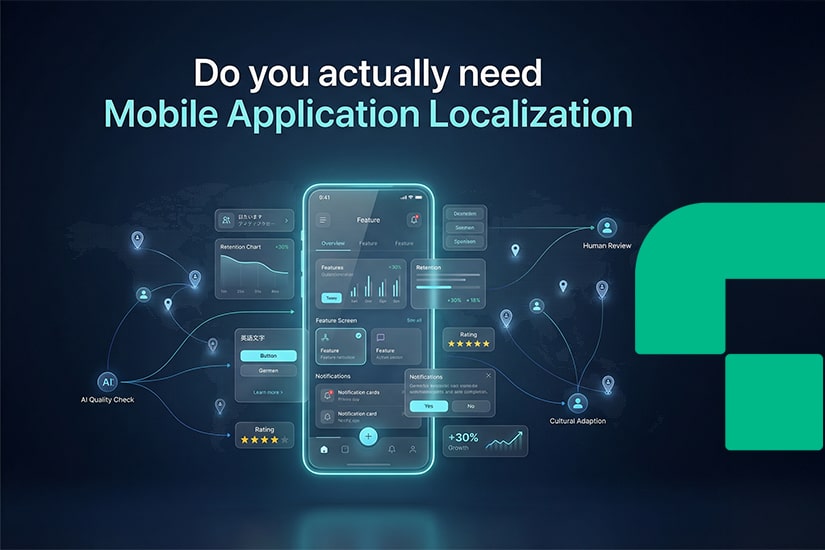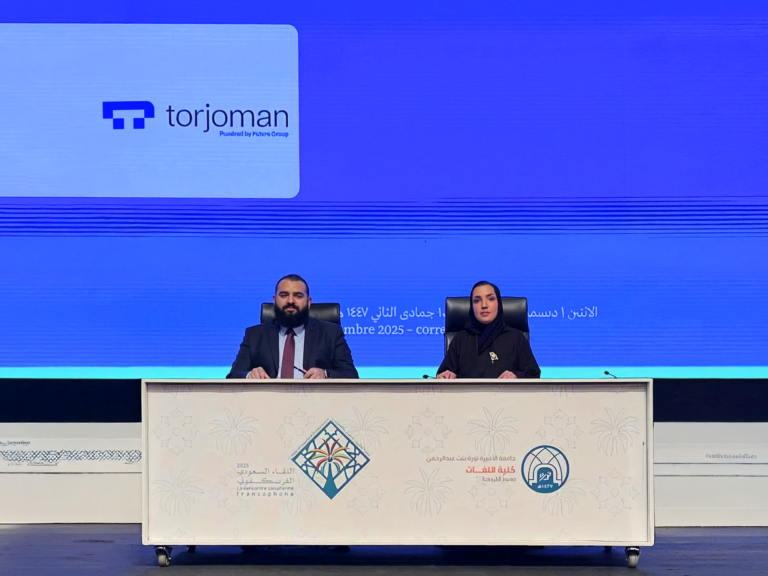Without localization of mobile applications, you will be ignoring business growth. If your mobile app targets UAE users, it has up to about 18 million potential users, and if you’re in KSA it will be up to 35 million potential users. But beyond those boundaries, there are a whopping 4.9 billion users worldwide.
According to this figure, you are missing out on about 94% of the global mobile app market. However, it is impossible to target these users with a traditional mobile app without modification, as around 40% of internet users do not make purchases on non-native websites. Assuming the same for mobile apps; that’s 40% of downloads you’ll never get, and even higher if your competitors have already localized their products.
But it’s not all so hopeless! This article introduces the localization of mobile applications.
We also cover the process step by step!
First, let’s look a little more at what mobile app localization is.
What is localization of mobile applications?
Mobile app localization involves changing some aspects of the app to better suit the target audience. For example, a mobile gaming company might change characters based on the target region to better interact with the audience.
Of course, it’s also important to change the language of your mobile application if people in your area do not speak the original language of your content. But mobile app localization is more than just translating words. Localizers also adjust content to make it easier to understand based on the context of the text.
The Mobile Application Localizer takes into account many aspects that can affect how an audience perceives a localized application. These aspects include cultural differences, language formats, local slang, images, and legal requirements. Improper localization of any of these factors can degrade the performance of your mobile app.
Above all, the purpose of localizing a mobile app is to customize and modify the app so that it can be considered built locally. This geographic aspect creates trust, relationships and comfort with end-users, which increases customer engagement and satisfaction, and means business growth.
What does mobile app localization include?
Localizing a mobile app is a multi-step process to create a genuine app for a new audience. The application localization phase includes content analysis, internationalization, project brief generation and quality assurance.
Here are four important aspects of successful Android and iOS app localization:
Content analysis
Mobile app localization involves many parts, so it’s important to plan your project properly. When you start analyzing your content, your mobile app localizer is better prepared for successful localization. It also gives you a clearer picture of the expected completion date so you can start preparing for release.
The content analysis phase of application localization itself involves several phases. One of them is that the mobile app localizer flags all content that needs to be modified so that you don’t miss a single detail. These details include local measurements, potentially sensitive material, user interfaces, and more.
In some cases, content writing services are critical to have new, authentic content that is written in the native language of the audience.
Mobile Application Internationalization (i18n)
Internationalization (i18n) is the next step in the application localization process And its purpose is to make future app localization projects as easy as possible. This step involves isolating the source code of the mobile app from aspects that require localization. Splitting your code gives you a reusable code structure for each new targeted audience.
An important step in i18n is to use variables in as many places as possible so that you don’t have to manually change them on every new project. You should also ensure that the user interface of your mobile app is flexible and automatically accommodates text in different languages. After all, you wouldn’t want your users’ first experiences to be full of glitches and out-of-place content!
Localization companies nowadays, like Torjoman, offer multilingual automated website and mobile application translation, allowing your website or mobile app to be automatically recast in different languages.
Project Brief
So that your mobile app localizers have a better idea of what you require, you must give them a project brief. The project brief generally contains all the big-picture statements about the mobile app. This includes the overall tone, messaging, and desired theme. You’ll also want to address any individual pieces of content that are particularly important for the mobile app—for example, introductions, privacy terms, or help manuals.
If there are any particular words that your localizers may struggle to (or shouldn’t) modify, you should add them into a glossary. This glossary gives you a clear idea of how to use certain words. For example, a mobile app might want to keep trademark words the same regardless of where they are localized, similar to the famous mobile application game (PUBG) or even the trending Korean TV show (Squid Game).
Quality Control (QC)
Quality control is critical to the success of your application localization project. These checks are used at critical points throughout the localization process. They catch bugs before they cause more obstacles. In general, quality checks prevent incorrectly localized aspects from influencing subsequent localization decisions.
There should be three main quality control checks in this process. First, after all language localization is finished. Followed by checking all imagery and text work. And finally, the functionality of the application itself before going online in the app store.
Above all, you should never skip the QC check part of the mobile app localization process. They ensure that the end user will have the best experience with your mobile application.
The potential market for your mobile application could grow exponentially if professionals take care of your mobile app localization. Offering your app in multiple languages across mobile devices in the form of iOS apps and those found on Google Play, is the best way to tap into the global market!
Here, at Torjoman, we specialize in getting mobile applications ready for new audiences, through our proprietary localization process. Regardless of whether you need Android app localization or assistance with iOS apps, we’re ready to help!
Including as many region-specific features into your mobile app as possible will give you the best chance of success. This is what makes mobile apps look like they were built locally. After all, most people prefer to use mobile apps that align with their culture, beliefs, values, and preferences.
Ready to expand your audience and introduce your mobile app to new audiences with mobile app localization? Then contact us to get a quick quote for your mobile app localization.








